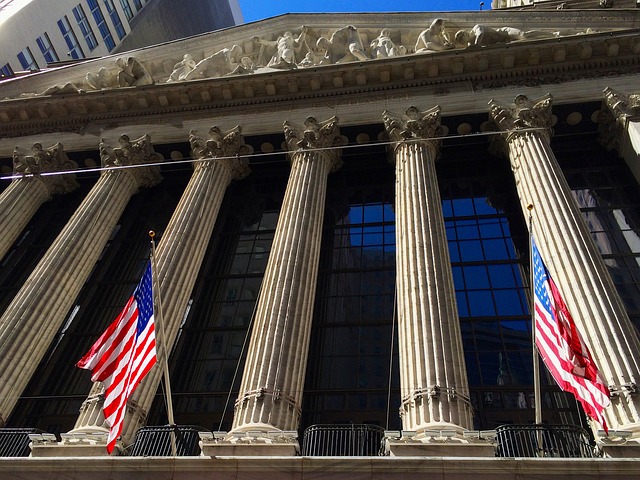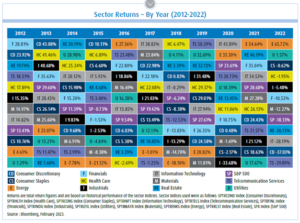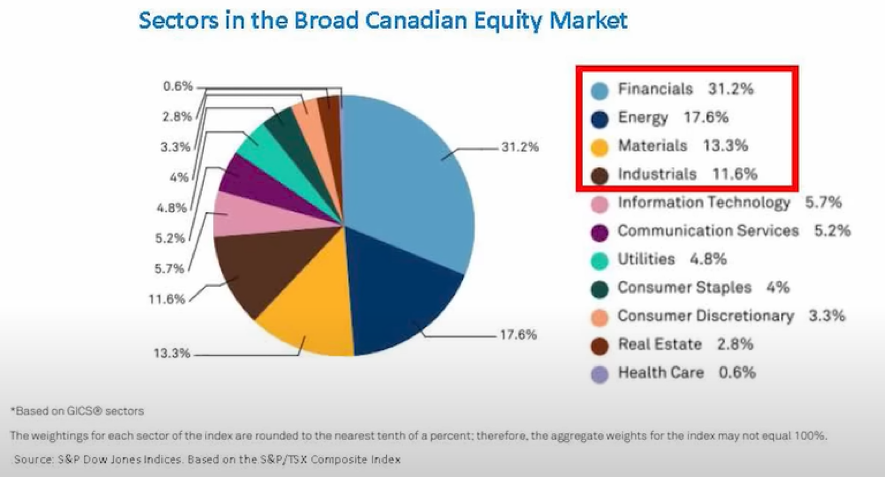Here’s how an equally weighted portfolio of healthcare, utility, and consumer staples ETFs could provide better downside protection and reduce volatility.

By Erin Allen, Director, Online Distribution, BMO ETFs
(Sponsor Blog)
The U.S. stock market, particularly the S&P 500 index, isn’t as uniform as it might seem. While you may think of it as a homogenous entity, it’s far from reality.
The S&P 500 can be broken down into 11 Global Industry Classification System (GICS) sectors: information technology, health care, financials, consumer discretionary, communication services, industrials, consumer staples, energy, utilities, real estate, and materials.
Each sector groups together companies that operate in the same industry and offer similar products and services. Historically, different sectors have also shown varying levels of sensitivity to market and economic conditions.
Some are cyclical, meaning they typically do well during economic expansions but struggle in downturns. On the other hand, some sectors are considered defensive, as their revenues and earnings remain stable regardless of economic cycles.
One well-known investment strategy that takes advantage of these differences is sector rotation, where investors shift their money between sectors based on macroeconomic indicators like GDP growth, interest rates, and inflation.
Source: SPDR Americas Research. ++/– indicates the best/worst two performing sectors. +/- indicates the third best/worst performing sectors. The Energy sector did not make the top/bottom three sectors during any cycles, as it is less sensitive to U.S. economic cycles but more driven by global supply and demand of crude oil. For illustrative purposes only. 1
However, for risk-conscious investors, another approach involves overweighting defensive sectors — particularly health care, utilities, and consumer staples — to provide better downside protection and reduce portfolio volatility.
What makes a sector defensive?
A sector is considered defensive when its companies provide goods or services that consumers continue to purchase regardless of economic conditions.2
For example, when the economy weakens, a consumer might delay buying a new car or upgrading their phone. These are discretionary purchases: non-essential items that can be postponed until financial conditions improve.
In contrast, even during a recession, people still pay their water and gas bills and continue buying household essentials like groceries and personal care products.
The underlying economic principle at play here is elasticity. In economics, elasticity measures how much the quantity demanded of a product changes in response to price or income changes.
Goods with inelastic demand see little fluctuation in consumption, even when prices rise or consumer income declines. This makes sectors with inelastic demand more stable during market downturns.
- Utilities: Electricity, water, and gas are necessities that households and businesses must pay for, regardless of economic conditions.
- Consumer Staples: Essential items like food, personal care products, and household goods remain in demand even when discretionary spending drops.
- Health Care: Medical services, prescription drugs, and insurance are critical expenses that people prioritize, often regardless of cost.
How defensive are these sectors?
One way to quantify how defensive a sector has historically been is to look at its beta, a measure of volatility relative to the broader market3.
The market itself has a beta of 1.0, meaning any stock or sector with a beta below 1.0 tends to be less volatile and moves less than the overall market during upswings and downturns.
When analyzing long-running sector ETFs, the historical five-year betas confirm that health care, consumer staples, and utilities have lower volatility than the broader market.
The Health Care Select Sector SPDR Fund (XLV) has a beta of 0.644, The Consumer Staples Select Sector SPDR Fund (XLP) comes in even lower at 0.575, and The Utilities Select Sector SPDR Fund (XLU) has a beta of 0.746. This suggests that all three sectors historically experience smaller price swings compared to the S&P 500.
Further supporting this, research from State Street Global Advisors examined periods of steep market drawdowns. Between 1999 and 2022, there were 11 instances where the S&P 500 declined by 10% or more in a single quarter7.
They found that an equally weighted portfolio of health care, consumer staples, and utilities delivered significantly smaller losses than both the S&P 500 and the Russell 1000 Value Index.
Morningstar direct. Data as of 6/30/227
This demonstrates how overweighting defensive sectors has historically provided better downside protection in times of market stress versus broad market indices.
The ETFs for the job
BMO’s lineup of SPDR Select Sector Index ETFs includes three options that align with the defensive sectors discussed earlier. These ETFs provide targeted exposure to U.S. health care, consumer staples, and utilities, ensuring investors can overweight these segments without exposure to the rest of the S&P 500. Continue Reading…












